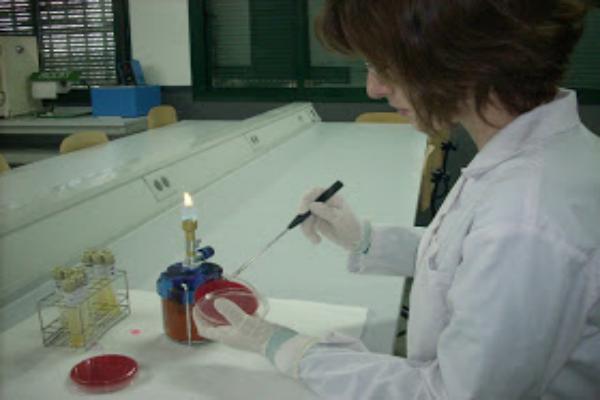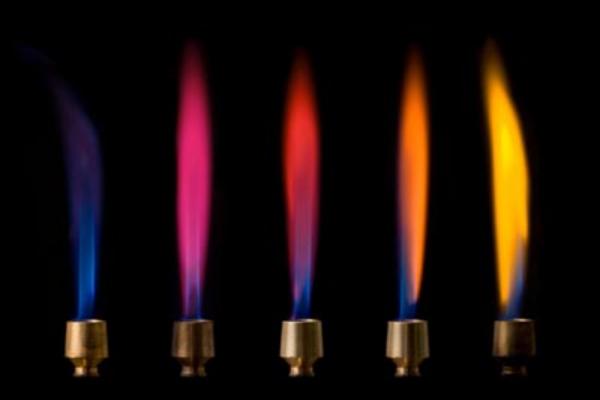Basic bunsen burner is a laboratory instrument capable of supplying a heat source efficiently and safely through a flame, which is the product of the combustion of a gas that is usually methane, or a mixture of propane and butane, is commonly used in laboratory appliances. The inventor Robert Bunsen named it that the basic function of a Bunsen burner in the laboratory is heating, sterilizing and combustion. it produces a single open gas flame. There are 6 main parts of the Bunsen burner, that is, a barrel, a collar, air holes, gas inlet, gas valve and holder.
🧪 What is it?
Bunsen lighters are normally fitted with a hose barb at the base of the chimney to allow rubber tubes to supply the gas from a gas nozzle on the laboratory table. There may also be a gas value in the Bunsen burner. The other critical component of a Bunsen lighter is the vent hole. This is located near the bottom of the fireplace, just above the gas inlet. The ventilation hole allows the pre-mixing of air and gas before combustion occurs in the upper part of the chimney. A collar around the base of the chimney, with a hole that aligns with the air hole, acts as an air regulator, allowing the air of the premix to be adjusted.
Air is drawn into the ventilation hole due to the Venturi effect. A fluid flow transfers energy in three ways, potential energy, pressure and kinetic energy. Bernoulli's principle states that, due to the conservation of energy, a change in velocity must result in either a change in potential energy or a change in fluid pressure. When a fluid flow increases in velocity, it is usually the pressure that decreases. Because the gas in a Bunsen burner flows through the chimney, it has a lower pressure than the static air surrounding it. This pressure difference causes air to enter the vent hole as gas flows through it, a phenomenon known as the Venturi effect.
As the air hole opens, the flame progresses from an unstable orange flame to a more steady orange, to a steady purple, and finally to a roaring blue flame. This progression results in an increase in the flame temperature. Basic bunsen burner, the unstable orange flame that occurs when the vent hole is completely closed is very visible and of lower temperature. Therefore, this safety flame is used for ignition and as the default position when the Bunsen burner is not in use.


How to use a burner
🕯Parts of the Bunsen lighter
Barrel (parts of the Bunsen lighter)
It has a tube about 5 inches long. The main function of the barrel is that it contains air inlet openings that mix air and gas, it is a metal tube that is located at the base of the burner. a smile size of holes (air inlets) is present in the barrel that opens at the bottom allowing air to enter the barrel.
When natural gas and air enter the barrel bypassing the air inlet opening, the air-gas mixture is ignited through the upper end of the barrel to make it functional.
Collar
The main function of the collar is to control the amount of air entering the barrel. it is present around the air holes at the lower end of the barrel, the collar works on the screw mechanism. A clockwise rotation of the collar increases the amount of air intake while a counterclockwise rotation decreases.


They are very useful in the laboratory
Gas point
Controls or limits the gas supply to the barrel.
Base
Typically, a base provides support for the Bunsen lighter. it is often present in the form of six-sided (hexagonal). being bearable, it is a wide and heavy part of the Bunsen burner.
Gas valve
The gas valve on the Bunsen burner is responsible for letting the gas into the barrel through the collar. it is often attached to the burner base or screw. the gas flow valve and the barrel can be similarly adjusted clockwise and counterclockwise.
Air holes
The ventilation holes allow air to enter the burner for an air-gas mixture or any other liquid fuel with air, for example, oil.


Types of flames
Rubber tube
Rubber tubes are used to transfer the gas to a Bunsen burner.
Gas inlet
A gas inlet is a point where gas enters the burner. it helps to extend the gas flow valve. The main function of the gas inlet is to control the leakage of gas through a gas pipe.
🧑🔬Functions of the Bunsen lighter
In 1852, Robert Bunsen invented the Bunsen lighter for the first time. this device is often used in the scientific laboratory under the direct current of natural gas or liquefied petroleum to heat different kinds of materials and liquids. it is often placed under the stand holding a beaker or a test tube filled with liquid.
If you connect a fuel source, get air into the barrel when opening the ventilation holes, if you close the air hole, a wavy yellow flame called luminous from the coldest flame will appear.
the air reacts with the incoming gas and produces a blue or non-luminous flame in a proportion of one-third. The non-luminous flame is always preferred when using the burner, because it is the hottest flame and easier to control over the luminous flame.
this flame also does not produce soot and smoke. The use of a burner is very burning, so care should always be taken and the laboratory safety rules adopted to avoid any kind of danger. In any case of any danger or accident, students should be referred quickly as first aid treatment.


Bunsen laboratory burner
🌡Fuel
There are two main sources of fuel for a Bunsen burner: natural gas (mainly methane) and liquefied petroleum gas (usually propane and/or butane). Basic bunsen burner, some of our burners come in both types, others only come in one. Be sure to select the correct burner for any fuel source you are going to use it is not safe to use a burner for one type of fuel with the other fuel.
It may also be of interest to you: What is a chemical equation?
⌛Air/fuel ratio
The fuel/air ratio will determine the intensity and type of flame produced. When the air valve of a burner is closed, a "luminous safety flame" will be emitted, a much colder and dirtier yellow flame. Basic bunsen burner, as the air valve opens, the flame becomes much less bright and significantly hotter.


How to control the flame
🧫Safety guidelines when using the Bunsen burner
Use a Bunsen lighter in a clean, uncluttered area. Put away notebooks, papers and any other clutter that may pose a fire hazard.
Wear safety equipment and tie your hair or loose clothing. In addition to wearing protective glasses and gloves, make sure that your wardrobe is free of potential fire hazards. Tie up long hair, tuck in or take off loose clothes, and remove dangling jewelry.
Locate security equipment, fire alarm and emergency exits. Before turning on the burner, know where to exit in an emergency, look for the emergency gas switch and locate the fire alarm
Handle the burner by its base. Hold the Bunsen lighter only by the base or by the collar at the bottom of the barrel. Once the burner is turned on, the barrel will be too hot to handle.
Never leave a lit Bunsen lighter unattended. Stay alert at all times and never leave the lab while it is on.
A Bunsen burner is a type of gas burner commonly used as a heat source in laboratory experiments. The basic bunsen burner consists of a flat base with a vertically extending straight tube, known as a barrel or chimney. Natural gas (predominantly methane) or a liquefied petroleum gas such as propane or butane is supplied from the bottom of the chimney.

